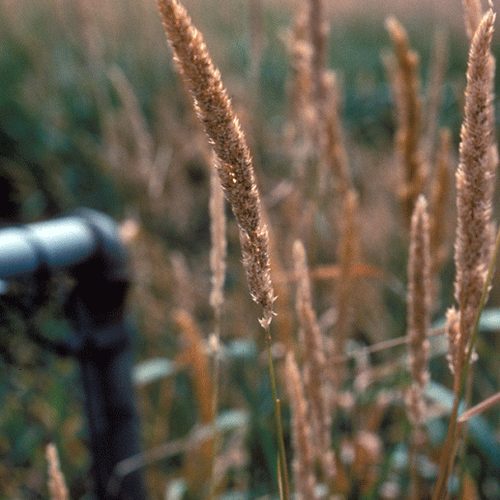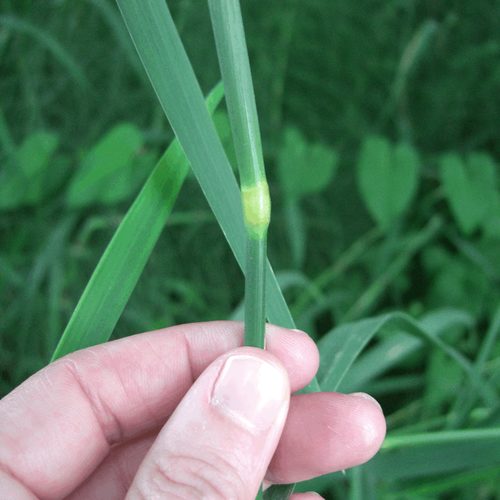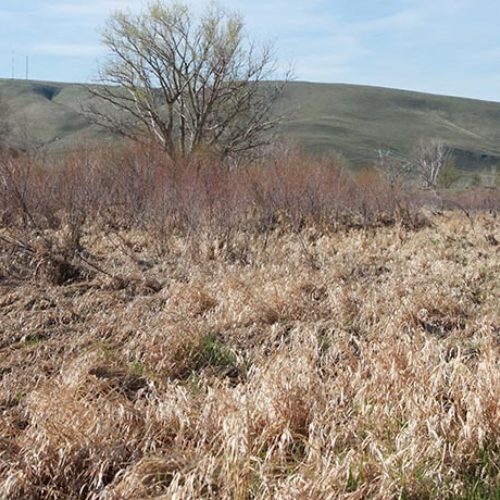Reed Canarygrass
Phalaris arundinacea

Family: Poaceae
Other Common Names: canary grass
Weed class: C
Year Listed: 1995
Native to: Eurasia
Is this Weed Toxic?:
not known to be
Why Is It a Noxious Weed?
It is a major threat to natural wetlands. It out competes most native species as it forms large, single-species stands, outcompeting other species. Dense stands have little wildlife habitat value. Its invasion can cause siltation in irrigation ditches.
How would I identify it?
General Description
A highly variable species, reed canarygrass is a rhizomatous, perennial, cool season grass that can reach three to six feet in height. It forms dense monotypic stands in wetland ecosystems.
Flower Description
Flowers are densely clustered in panicles with 3 florets per spikelet, one floret is fertile while the other two are sterile. Plants bloom May to mid-June. They are green to purple and change to beige over time.
Leaf description
Leaf blades are flat and hairless, 1/4 to 3/4 of an inch wide. Ligules 0.16 to 0.39 inch (4 to 10 mm) long.
Stem description
Stems can reach 3 to 6 feet in height. The sturdy, often hollow stems can be up to 1/2 inch in diameter, with some reddish coloration near the top.
Where does it grow?
It typically occurs in soils that are saturated or nearly saturated for most of the growing season. Established stands can tolerate extended periods of inundation. It grows in roadside ditches, river dikes, shallow marshes, wetlands and meadows. Please click here to see a county level distribution map of reed canary grass in Washington.
How Does it Reproduce?
Reed canarygrass can spread by seeds or by creeping rhizomes. The species will also produce roots and shoots from the nodes of freshly cut stems.
How Do I Control It?
Mechanical Control
Mowing may be a valuable control method, since it removes seed heads before seed maturation and exposes the ground to light, which promotes the growth of native species. Studies in Wisconsin indicated that twice-yearly mowings (in early to mid-June and early October) led to increased numbers of native species in comparison to reed canarygrass-infested plots that were not mowed.
Herbicide Control
Please refer to the PNW Weed Management Handbook, or contact your county noxious weed coordinator.
For More Information
See our Written Findings for more information about reed canarygrass (Phalaris arundinacea).
Asotin County NWCB Fact Sheet on reed canarygrass
King County NWCB Fact Sheet on reed canarygrass
Whatcom County NWCB Fact Sheet on reed canarygrass
Control Options for reed canarygrass from King County NWCB
Control Options for reed canarygrass from Whatcom County NWCB
Phalaris arundinacea, reed canarygrass, in the book Weed Control in Natural Areas in the Western United States
USDA Forest Service, FEIS information on reed canarygrass













